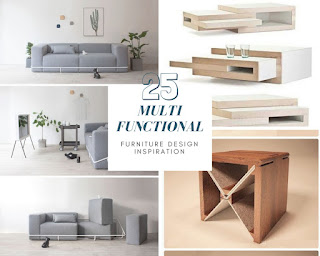Storage Furniture Plans to Maximize Your Space
In contemporary living, maximizing space is paramount. Clutter not only detracts from aesthetic appeal but also contributes to a sense of confinement and stress. Strategic incorporation of custom-designed storage furniture presents a sophisticated solution to this pervasive problem. This article explores various plans and designs for creating bespoke storage solutions that seamlessly integrate into diverse living spaces, significantly enhancing both functionality and visual appeal.
Assessing Your Storage Needs: A Comprehensive Approach
Before embarking on the design phase, a thorough assessment of storage requirements is crucial. This involves a meticulous inventory of possessions, categorizing items based on frequency of use, size, and fragility. Understanding these factors will inform the design process and ensure optimal functionality of the final product.
Analyzing Item Categories and Frequency of Use
Categorizing items into frequently used, occasionally used, and rarely used will dictate their optimal storage location. Frequently accessed items should be placed in easily accessible areas, while less frequently used items can be stored in higher or less convenient locations. For example, everyday clothing might be stored in easily accessible drawers, whereas seasonal items could be housed in lofted storage or less visible areas.
Measuring Spaces and Identifying Storage Gaps
Accurate measurements are paramount. Detailed measurements of the designated storage area, including height, width, and depth, are essential for creating furniture that fits seamlessly. This process should also identify existing storage gaps or underutilized areas that can be optimized for increased storage capacity. For instance, the space under staircases or awkward corners often presents untapped storage potential.
Considering Material Durability and Aesthetic Preferences
The choice of materials significantly impacts both the durability and the aesthetic appeal of the storage furniture. Solid wood offers exceptional durability and a classic aesthetic, though it tends to be more expensive. MDF (Medium-Density Fiberboard) and particleboard present more budget-friendly options, but require careful consideration of their susceptibility to moisture and wear. Aesthetic preferences should also inform material selection, ensuring harmony with the existing décor of the space.
Custom Storage Solutions: Tailored Designs for Diverse Spaces
Custom-designed storage furniture offers unparalleled versatility, allowing for the creation of solutions perfectly tailored to individual needs and space constraints. This section explores various designs adaptable to different room types and architectural features.
Built-in Wardrobes and Closets: Maximizing Vertical Space
Built-in wardrobes and closets are particularly effective in maximizing vertical space, offering extensive storage capacity within a minimal footprint. Clever design can incorporate features such as pull-out drawers, adjustable shelves, and specialized hanging rods for optimal organization. Consider the incorporation of mirrored doors to enhance the sense of spaciousness and to reflect light, brightening the room.
Under-Stair Storage: Utilizing Often-Neglected Space
The space beneath staircases is often overlooked, presenting a valuable opportunity for creative storage solutions. Custom-built drawers, shelves, or even a small cupboard can transform this underutilized area into a functional storage space. The design should consider the staircase's incline and the available depth to ensure easy access to stored items.
Modular Storage Units: Adaptable and Flexible Solutions
Modular storage units offer unmatched adaptability. These units consist of individual components that can be arranged and rearranged to suit evolving needs and space configurations. Their flexibility makes them ideal for open-plan living areas or rooms with irregular shapes, allowing for the creation of bespoke storage solutions that seamlessly integrate into the existing environment.
Murphy Beds and Convertible Furniture: Space-Saving Innovations
In smaller spaces, Murphy beds and other forms of convertible furniture are invaluable for maximizing floor area. These space-saving designs combine sleeping and storage functionalities, creating a versatile solution ideal for apartments, guest rooms, or home offices.
Optimizing Design for Enhanced Functionality
The functionality of custom storage furniture is paramount. Several design features can enhance usability and make the most of the available space.
Adjustable Shelves and Drawers: Adapting to Changing Needs
Adjustable shelves and drawers provide flexibility to accommodate items of varying sizes and shapes. This adaptability ensures that the storage solution remains effective as storage needs evolve over time.
Pull-out Drawers and Baskets: Easy Access to Stored Items
Pull-out drawers and baskets enable easy access to stored items, eliminating the need for rummaging through cluttered shelves. This feature is particularly beneficial for frequently used items.
Hidden Compartments and Concealed Storage: Maintaining a Tidy Appearance
Hidden compartments and concealed storage help maintain a tidy appearance by keeping less aesthetically pleasing items out of sight. This is a valuable design element for maximizing visual appeal while ensuring sufficient storage capacity.
Soft-Close Hinges and Slides: Enhancing User Experience
Incorporating soft-close hinges and slides enhances the user experience by preventing loud bangs and minimizing the risk of damage to the furniture or stored items. This detail significantly improves the overall quality and longevity of the storage solution.
Conclusion: A Transformative Approach to Space Management
Implementing strategic storage furniture plans can significantly enhance the functionality and aesthetic appeal of any living space. By carefully assessing individual needs, meticulously measuring spaces, and selecting appropriate materials and design features, one can create custom storage solutions that effectively maximize space and enhance the overall living experience. The investment in well-designed storage furniture is not merely an expenditure but a transformative approach to space management, contributing to a more organized, efficient, and aesthetically pleasing home environment.




































